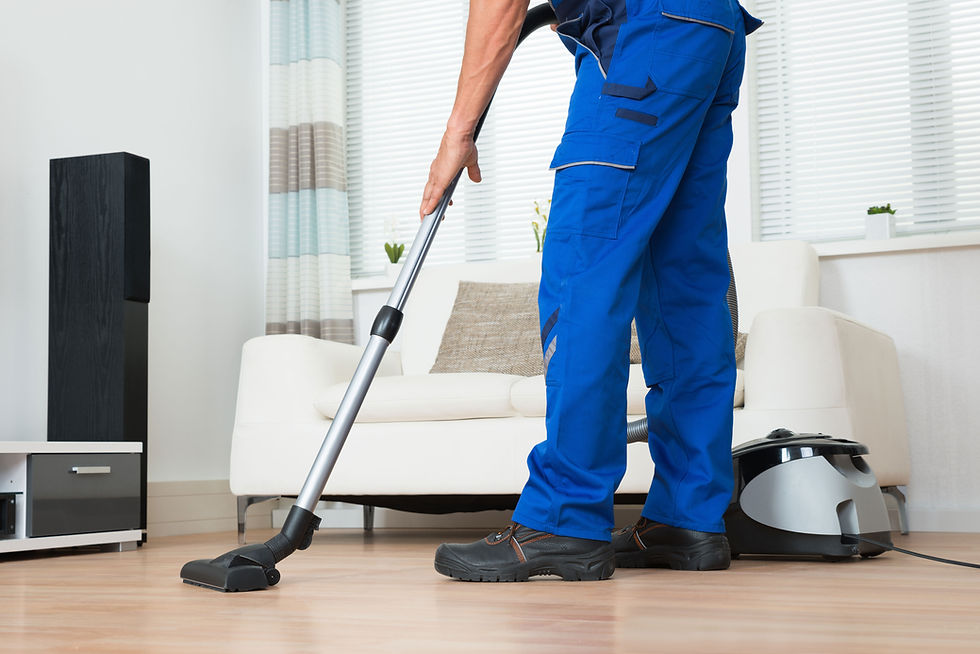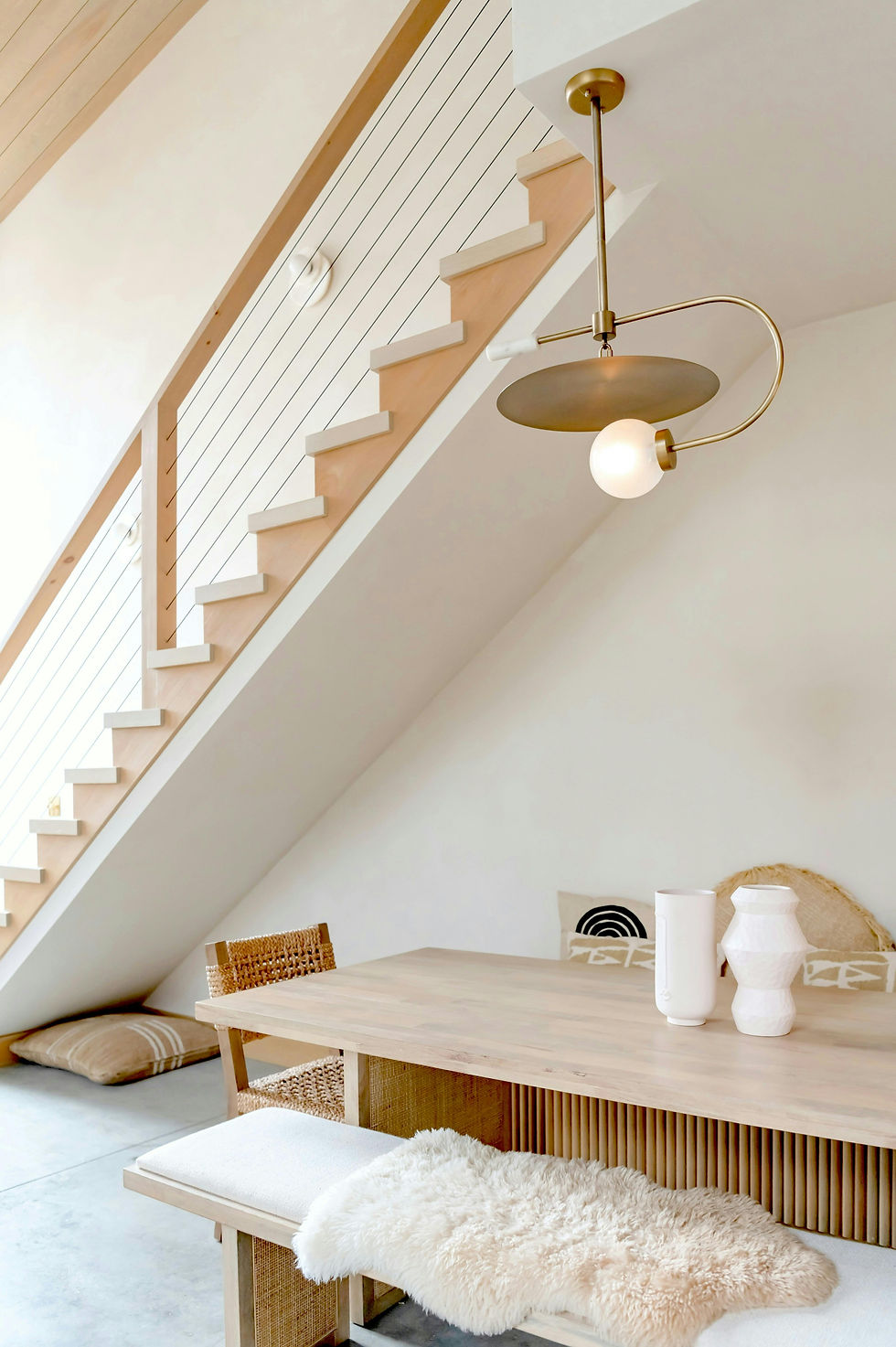Post-Renovation Cleaning in SA: How to Remove Construction Dust Safely (and Protect Your HVAC)
- Oliver Owens
- Nov 1
- 6 min read
Quick take
Remodel done, dust everywhere? You’re not imagining it—construction dust is sneaky. It settles on every ledge, floats back up the moment you walk by, and loves to hide in window tracks, cabinet hinges, and your HVAC system. The good news: with a negative-air setup, sequential dusting, and smart filter steps, you can clear the haze without recirculating it through the whole house. Below is the U B Lazy Cleaning Services method we use across San Antonio to get newly renovated spaces truly move-in clean—without harsh fragrances or risky shortcuts.

Why post-renovation dust is different (and why it’s worse in SA)
Construction dust isn’t just “regular dust.” It’s a mix of gypsum (from drywall), silica (from tile/concrete cuts), wood and paint particulates, joint compound, adhesives, and sometimes metal shavings. If it gets into your return ducts or settles inside your evaporator coil, indoor air quality nose-dives and your system works harder (read: higher bills, more breakdowns). In San Antonio, a few local factors amplify the mess:
Humidity swings that make fine dust cling to surfaces and turn to paste in window/door tracks.
Open-air job sites that invite outdoor dust inside while crews are coming and going.
Slab grinding and tile demo (very common here) that generate lots of fine silica.
Bottom line: you need a plan that captures dust, not just pushes it around.
The golden rule: Create negative air before you clean
Before you break out a single microfiber cloth, establish negative air in the work zone so the dust flows out of the house—not toward bedrooms and living areas.
How to do it (homeowner edition):
Close doors to non-work areas and draft-proof with painter’s tape at the jamb if gaps are large.
Open a window in the work zone and set a box fan facing outward to exhaust air. Seal around it with cardboard and tape to reduce gaps.
If you have an air scrubber with a HEPA filter, place it in the work area and let it run continuously during and after cleaning.
Contractor upgrade: On larger projects, pros use zip walls with sealed flaps and a dedicated HEPA negative-air machine vented outside. If your renovation included tile demo or drywall sanding, request this in writing next time—it saves hours later.
Our sequential dusting method (so you’re not chasing your tail)
If you dust in the wrong order, you’ll feel stuck in Groundhog Day. Here’s the top-down, clean-to-dirty sequence we follow:
1) High surfaces first
Ceilings, can lights, ceiling fan blades, beams. Use an extendable duster or microfiber on a flat mop head—dry first to lift, damp second to capture.
HVAC supply and return grilles (exteriors). Vacuum with a soft brush attachment; don’t forget the surrounding ceiling/wall.
2) Upper walls, door frames, and trim
Very lightly damp microfiber in long, vertical passes—no heavy moisture on fresh paint.
Outlets & switch plates: Remove dust with a dry cloth; avoid liquid near openings.
3) Cabinets, shelves, and closets
Inside–out, top–down. Pull out drawers if possible and vacuum rails.
Hinges and hardware collect fine dust; a small detail brush + microfiber wins.
4) Windows, tracks, and sliding doors (the hidden dust bowls)
Vacuum the tracks with crevice tool first.
Damp detail brush in corners; wipe out slurry with microfiber.
Screens: Take them out, vacuum both sides, then rinse outdoors and air-dry.
5) Countertops and work surfaces
Start dry, then finish damp with a pH-neutral cleaner compatible with your surface (stone, quartz, butcher block).
Avoid abrasives on soft stones or new finishes.
6) Baseboards and low trim
Dust falls here last—hit them after the above steps so you don’t redo work.
7) Floors (always last)
Vacuum thoroughly with a soft-floor head; empty the canister outside.
Damp mop hard surfaces with a neutral cleaner; rinse pads often.
For carpeted areas, a vacuum with a sealed HEPA system helps trap fine particulates; severe cases may need hot water extraction (post-construction residue can feel gritty underfoot if you skip this).
HVAC protection: the “no-recirc” checklist
Renovation dust + HVAC equals a longer cleanup and a shorter system lifespan. Here’s how we keep the system safe:
Power down the system during the dusty phases (demo, sanding, sweeping).
Cover supply registers and return grilles in active work rooms with painter’s tape + plastic film; remove covers daily to run the system for comfort as needed, then re-cover when work resumes.
Change filters in stages:
Stage 1 (rough clean): Install an inexpensive pleated filter (MERV 8–10) to catch the bulk after construction ends and your first deep clean begins.
Stage 2 (final clean): Swap again for a higher-efficiency filter—MERV 11–13 if your system can handle it without starving airflow.
Stage 3 (30 days later): Replace once more to remove the last of the “settle dust” that circulates as you start living in the space.
Vacuum the return cavity (behind the grille) with a brush attachment if accessible and safe.
Schedule a coil/duct inspection if demo created heavy fine dust (tile grind, drywall clouds). Full duct cleaning isn’t always necessary, but targeted cleaning of visibly dusty runs and the air handler cabinet can be a lifesaver.
Want a neutral resource for educating your crew or landlord? Link to the EPA’s guidance on indoor particulate matter for general health context and best practices.
The right tools (and why they matter)
HEPA vacuum (sealed system): traps fines that cheap shop vacs blow back out.
Microfiber everything: cloths, dust mops, and washable pads with split fibers that lock in dust instead of pushing it.
Detail brushes and crevice tools for tracks, rails, and trim.
pH-neutral hard-surface cleaner to avoid film on LVP/tile and streaks on stone.
Air scrubber (optional but amazing): reduces airborne dust during and after cleaning.
What not to do (we see these every week)
Don’t dry-sweep large areas of fine dust; it just launches particles into the air. Vacuum first with a HEPA machine.
Don’t run the HVAC while sanding or sweeping—ever.
Don’t saturate new finishes. Too-wet mops can swell baseboards and dull LVP.
Don’t use high-alkaline cleaners on natural stone or newly sealed grout.
Don’t mix chemicals. Bleach + ammonia (or acidic cleaners) = dangerous gases. Keep it simple and surface-appropriate.
Room-by-room playbook
Kitchens
Inside cabinets (shelves & lips), under toe-kicks, and appliance gaps hide the heaviest dust.
Pull range and fridge forward if safe; vacuum behind and under.
Stainless gets a final pass with a slightly damp microfiber, then a dry buff to remove haze.
Bathrooms
Fan housings and light trims collect drywall dust—vacuum carefully.
Shower tracks (if any) and under-sink cabinet floors gather debris; wipe and dry to prevent warping.
Living spaces
Ceiling fan blades rain dust if you forget them.
Fabric furniture: vacuum crevices and under cushions; consider a low-moisture extraction if fine dust left a tacky film.
Bedrooms
Wash or replace HVAC return room filters if you have ductless/mini-split heads; clean the washable screens per manufacturer guidance.
Launder all linens and curtains after the final dust pass.
The U B Lazy post-reno cleanup workflow (what you can expect)
Walkthrough + dust mapping (including window tracks and vents).
Negative-air setup (and air scrubber if needed).
Top-down dusting with microfiber—two passes: dry capture, then slightly damp.
Precision detail: cabinet interiors, door hardware, hinges, tracks, closet systems.
HVAC care: grille cleaning, return cavity vacuum, filter swap plan (we can supply filters).
Hard-surface reset: HEPA vacuum → neutral cleaner damp mop → pad rinse cycle.
Final polish: glass, fixtures, and stainless; no heavy fragrances.
Settle-dust follow-up: optional short revisit 3–7 days later for a quick touch, because micro-dust continues to land as the space stabilizes.
DIY vs. hiring pros—how to choose
DIY is fine for small projects (single room paint or light drywall patching) if you have a HEPA vacuum and a free afternoon.
Multiple rooms were involved or tile/demo created silica-heavy dust.
You see film returning on surfaces hours after you dust.
Family members have allergies/asthma or you want HVAC-safe cleaning and filter planning.
You’d like a one-time clean that feels like a reset—without perfumey coverups.
Explore our Deep Cleaning services or book a One-Time Clean. Need a sparkle pass on floors and counters? Add Hard Surface Cleaning for a lasting finish.
FAQs
How long does dust keep settling after a remodel?
Typically 3–7 days, depending on airflow and how thorough the first pass was. That’s why we recommend a short follow-up touch.
Will one filter change be enough?
Usually not. We recommend a three-stage swap (immediately after, final clean, then 30 days later). Your system’s airflow limits the max MERV—ask us for a safe spec.
Do I need duct cleaning?
Not always. Start with grille/cavity cleaning and filter cycles. If you still smell drywall dust or see plumes from specific vents, targeted duct cleaning or air handler cabinet cleaning may be warranted.
Can I use my shop vac?
Many shop vacs aren’t sealed HEPA and can re-aerosolize fine dust. Use a sealed HEPA machine or a shop vac with a true HEPA cartridge and bag.
Ready to breathe again?
If your “new” space still looks hazy in the morning sun, we’ll bring the air back to clear. Book a One-Time Clean or add Deep Cleaning and Hard Surface Cleaning for a full reset. We’ll also set your MERV filter plan and protect your HVAC while we work.



Comments